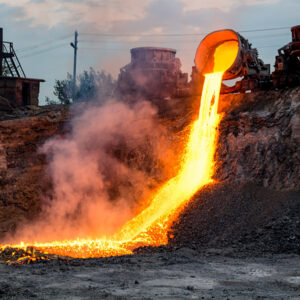Panipat, located in present-day Haryana, India, holds historical significance due to its strategic location at the crossroads of various trade routes and its proximity to the rich agricultural lands of the Gangetic plains. Several empire-shaking battles were fought at Panipat due to the following reasons:
- Geographical Location: Panipat’s location made it a crucial junction for military movements and trade routes in medieval India. It was situated on the Grand Trunk Road, which connected Delhi to the northwest regions of the Indian subcontinent. Its proximity to the Yamuna River also made it strategically significant for transportation and communication.
- Control over Delhi: Delhi, the capital of various Indian empires throughout history, was a coveted prize for any aspiring ruler. Panipat, lying to the north of Delhi, often became the battleground for contenders vying for control over the imperial city. Victories at Panipat often meant control over Delhi and, by extension, dominance over the surrounding territories.
- Strategic Defense: Panipat offered natural defenses with its terrain, which consisted of flat plains suitable for cavalry movements. Armies could deploy their forces advantageously, making it an attractive location for decisive battles. Additionally, the region had a scarcity of natural obstacles, facilitating large-scale troop movements.
- Political Instability: The Indian subcontinent witnessed frequent political upheavals and power struggles among various kingdoms, empires, and dynasties. Panipat’s strategic importance made it a focal point for ambitious rulers seeking to expand their territories or assert their dominance over rivals. The clash of competing interests often culminated in battles at Panipat.
- Economic Importance: The fertile lands surrounding Panipat supported extensive agriculture, contributing to the region’s economic significance. Control over Panipat meant access to vital resources and revenue streams derived from agriculture, trade, and taxation, further incentivizing rulers to vie for control over the area.
The combination of these factors made Panipat a recurring site for decisive battles that shaped the course of Indian history, including the battles of 1526, 1556, and 1761, each of which had profound implications for the empires involved.
Hindi Answer
पानीपत की तीसरी लड़ाई 1761 में लड़ी गई थी। पानीपत में इतनी सारी साम्राज्य हिला देने वाली लड़ाइयाँ क्यों लड़ी गईं?
भारत के वर्तमान हरियाणा में स्थित पानीपत, विभिन्न व्यापार मार्गों के चौराहे पर अपनी रणनीतिक स्थिति और गंगा के मैदानों की समृद्ध कृषि भूमि के निकट होने के कारण ऐतिहासिक महत्व रखता है। निम्नलिखित कारणों से पानीपत में कई साम्राज्य-हिलाने वाली लड़ाइयाँ लड़ी गईं:
- भौगोलिक स्थिति: पानीपत की स्थिति ने इसे मध्यकालीन भारत में सैन्य आंदोलनों और व्यापार मार्गों के लिए एक महत्वपूर्ण जंक्शन बना दिया। यह ग्रैंड ट्रंक रोड पर स्थित था, जो दिल्ली को भारतीय उपमहाद्वीप के उत्तर-पश्चिमी क्षेत्रों से जोड़ता था। यमुना नदी से इसकी निकटता ने इसे परिवहन और संचार के लिए रणनीतिक रूप से भी महत्वपूर्ण बना दिया है।
- दिल्ली पर नियंत्रण: पूरे इतिहास में विभिन्न भारतीय साम्राज्यों की राजधानी दिल्ली, किसी भी महत्वाकांक्षी शासक के लिए एक प्रतिष्ठित पुरस्कार थी। दिल्ली के उत्तर में स्थित पानीपत, अक्सर शाही शहर पर नियंत्रण के लिए प्रतिस्पर्धा करने वाले दावेदारों के लिए युद्ध का मैदान बन जाता था। पानीपत में जीत का मतलब अक्सर दिल्ली पर नियंत्रण और, विस्तार से, आसपास के क्षेत्रों पर प्रभुत्व होता है।
- सामरिक रक्षा: पानीपत ने अपने इलाके के साथ प्राकृतिक सुरक्षा की पेशकश की, जिसमें घुड़सवार सेना की गतिविधियों के लिए उपयुक्त समतल मैदान शामिल थे। सेनाएँ अपनी सेनाओं को लाभप्रद ढंग से तैनात कर सकती हैं, जिससे यह निर्णायक लड़ाई के लिए एक आकर्षक स्थान बन सकता है। इसके अतिरिक्त, इस क्षेत्र में प्राकृतिक बाधाओं की कमी थी, जिससे बड़े पैमाने पर सैन्य आवाजाही की सुविधा थी।
- राजनीतिक अस्थिरता: भारतीय उपमहाद्वीप में विभिन्न राज्यों, साम्राज्यों और राजवंशों के बीच लगातार राजनीतिक उथल-पुथल और सत्ता संघर्ष देखा गया। पानीपत के सामरिक महत्व ने इसे महत्वाकांक्षी शासकों के लिए एक केंद्र बिंदु बना दिया जो अपने क्षेत्रों का विस्तार करना चाहते थे या प्रतिद्वंद्वियों पर अपना प्रभुत्व स्थापित करना चाहते थे। प्रतिस्पर्धी हितों के टकराव की परिणति अक्सर पानीपत की लड़ाइयों में हुई।
- आर्थिक महत्व: पानीपत के आसपास की उपजाऊ भूमि ने व्यापक कृषि को बढ़ावा दिया, जिससे इस क्षेत्र का आर्थिक महत्व बढ़ गया। पानीपत पर नियंत्रण का मतलब कृषि, व्यापार और कराधान से प्राप्त महत्वपूर्ण संसाधनों और राजस्व धाराओं तक पहुंच था, जिससे शासकों को क्षेत्र पर नियंत्रण के लिए प्रोत्साहित किया जा सके।
इन कारकों के संयोजन ने पानीपत को निर्णायक लड़ाइयों के लिए एक आवर्ती स्थल बना दिया, जिसने भारतीय इतिहास के पाठ्यक्रम को आकार दिया, जिसमें 1526, 1556 और 1761 की लड़ाइयाँ शामिल थीं, जिनमें से प्रत्येक में शामिल साम्राज्यों के लिए गहरा प्रभाव था।


